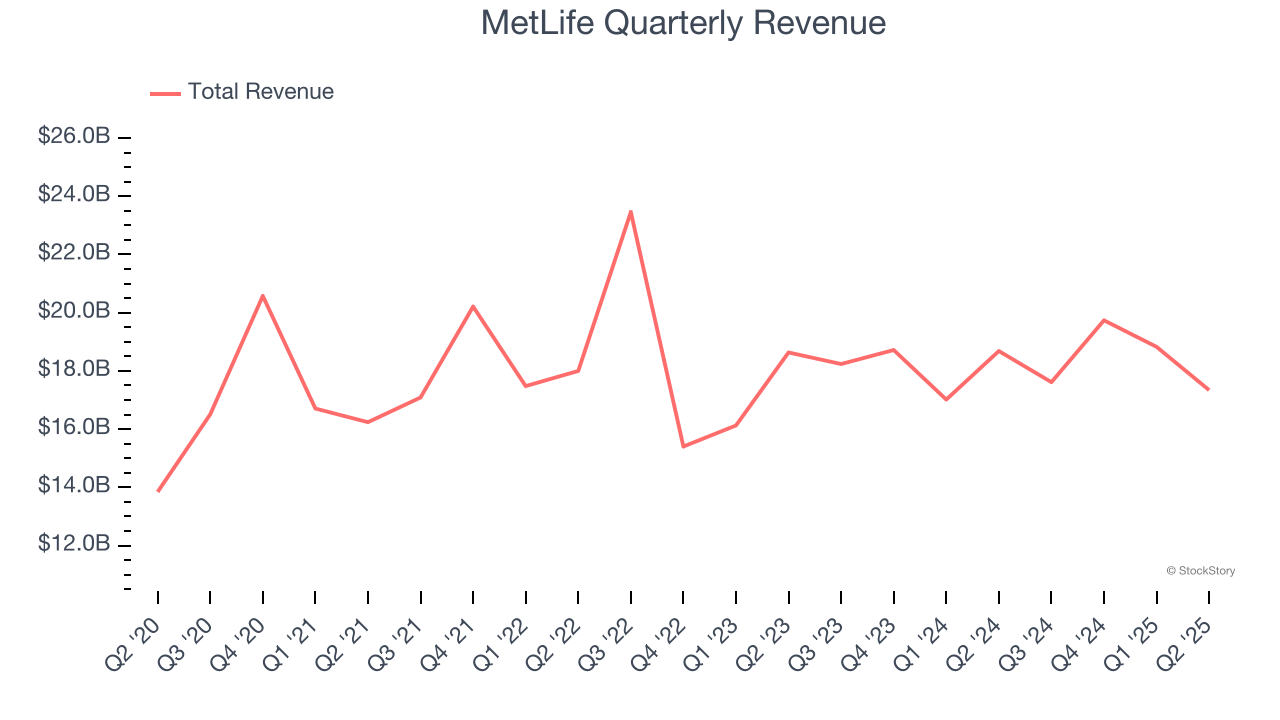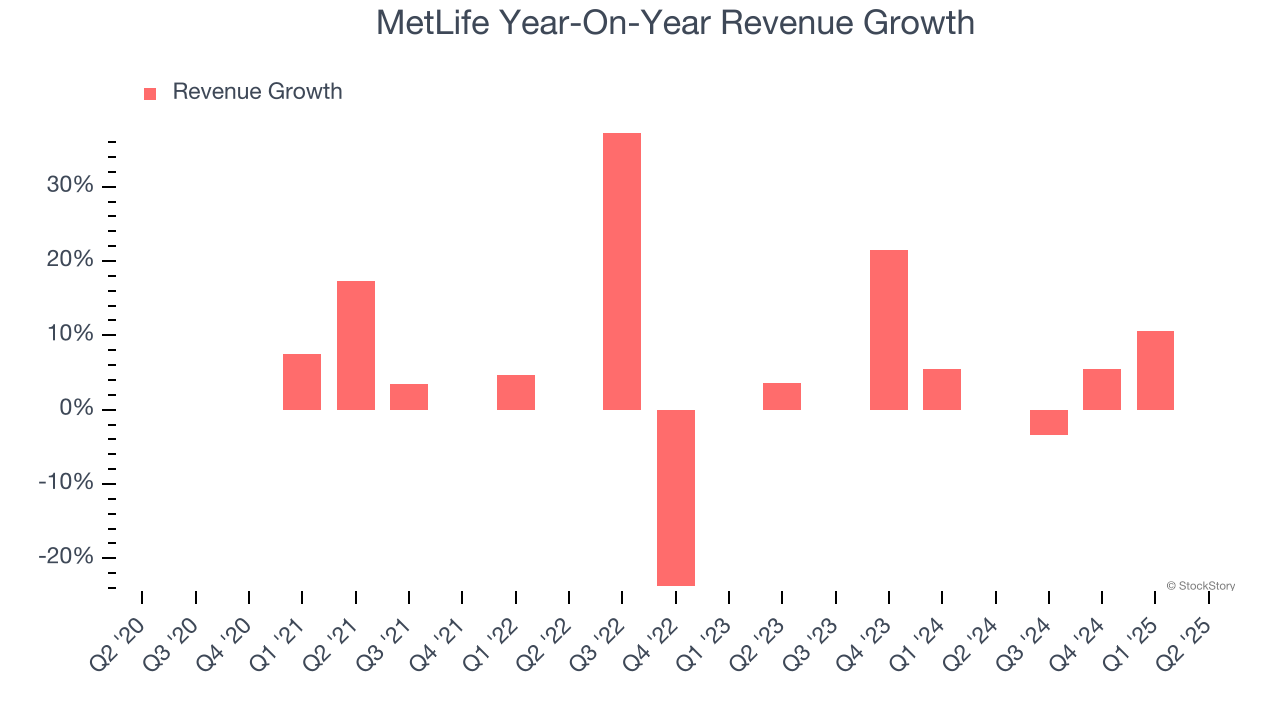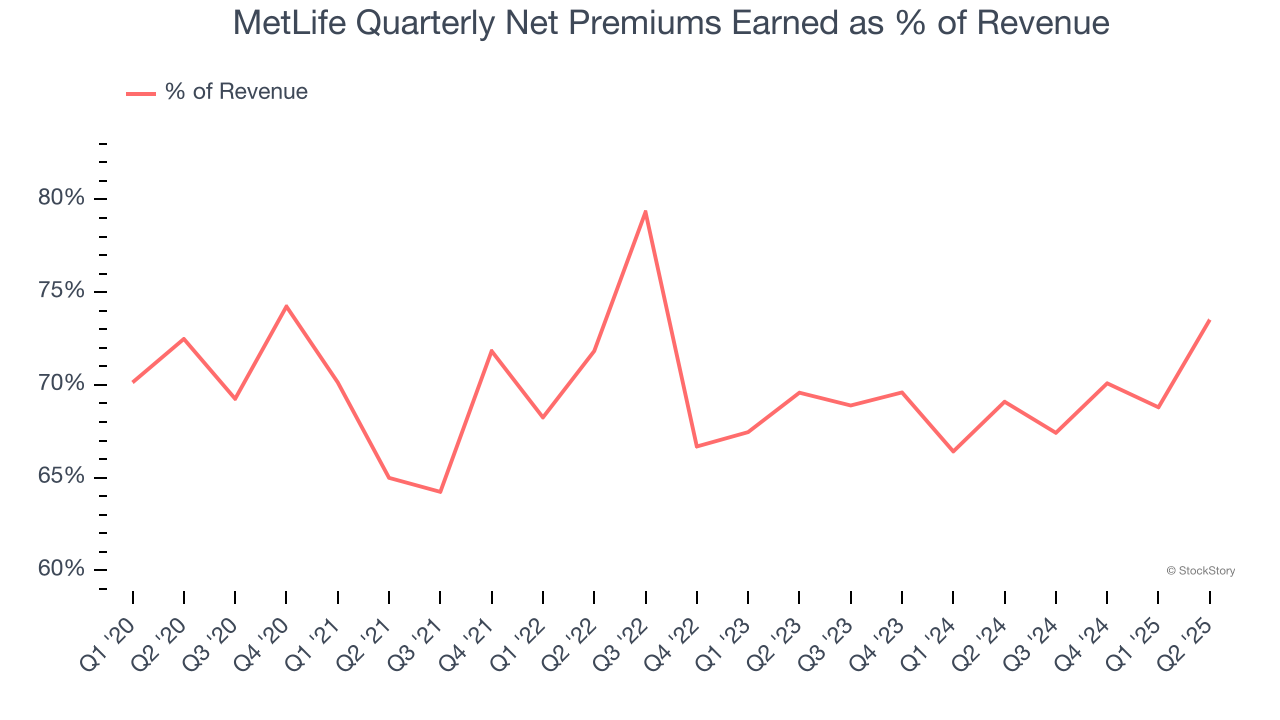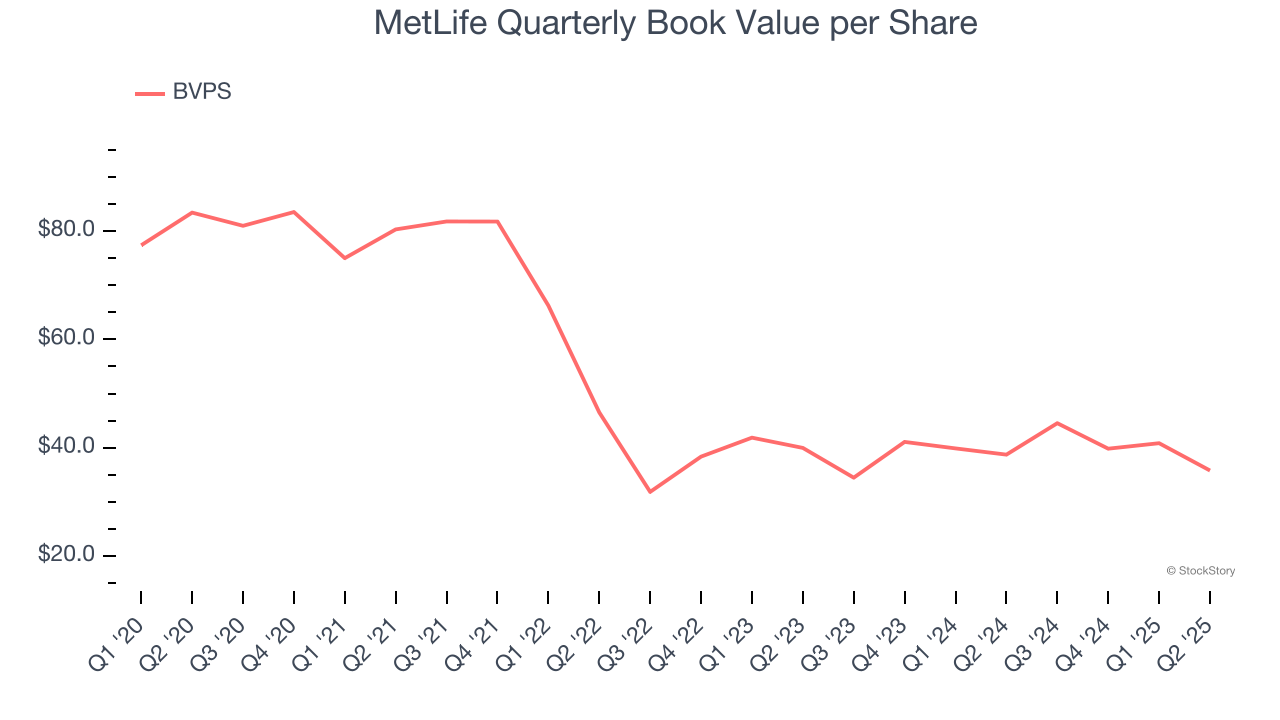
Global insurance giant MetLife (NYSE:MET) fell short of the market’s revenue expectations in Q2 CY2025, with sales falling 7.2% year on year to $17.34 billion. Its non-GAAP profit of $2.02 per share was 6.3% below analysts’ consensus estimates.
Is now the time to buy MetLife? Find out by accessing our full research report, it’s free.
MetLife (MET) Q2 CY2025 Highlights:
- Net Premiums Earned: $12.75 billion vs analyst estimates of $11.15 billion (1.2% year-on-year decline, 14.4% beat)
- Revenue: $17.34 billion vs analyst estimates of $18.64 billion (7.2% year-on-year decline, 7% miss)
- Pre-Tax Profit Margin: 5.7% (flat year on year)
- Adjusted EPS: $2.02 vs analyst expectations of $2.16 (6.3% miss)
- Market Capitalization: $50.99 billion
Company Overview
Founded in 1863 by a group of New York businessmen during the Civil War era, MetLife (NYSE:MET) is a global financial services company that provides insurance, annuities, employee benefits, and asset management services to individuals and businesses worldwide.
Revenue Growth
Insurance companies generate revenue three ways. The first is the core insurance business itself, represented in the income statement as premiums earned. The second source is investment income from investing the “float” (premiums collected but not yet paid out as claims) in assets such as fixed-income assets and equities. The third is fees from policy administration, annuities, and other value-added services.
Unfortunately, MetLife’s 2.7% annualized revenue growth over the last five years was sluggish. This was below our standards and is a rough starting point for our analysis.

Long-term growth is the most important, but within financials, a half-decade historical view may miss recent interest rate changes and market returns. MetLife’s recent performance shows its demand has slowed as its revenue was flat over the last two years.  Note: Quarters not shown were determined to be outliers, impacted by outsized investment gains/losses that are not indicative of the recurring fundamentals of the business.
Note: Quarters not shown were determined to be outliers, impacted by outsized investment gains/losses that are not indicative of the recurring fundamentals of the business.
This quarter, MetLife missed Wall Street’s estimates and reported a rather uninspiring 7.2% year-on-year revenue decline, generating $17.34 billion of revenue.
Net premiums earned made up 69.8% of the company’s total revenue during the last five years, meaning insurance operations are MetLife’s largest source of revenue.

Net premiums earned commands greater market attention due to its reliability and consistency, whereas investment and fee income are often seen as more volatile revenue streams that fluctuate with market conditions.
Today’s young investors won’t have read the timeless lessons in Gorilla Game: Picking Winners In High Technology because it was written more than 20 years ago when Microsoft and Apple were first establishing their supremacy. But if we apply the same principles, then enterprise software stocks leveraging their own generative AI capabilities may well be the Gorillas of the future. So, in that spirit, we are excited to present our Special Free Report on a profitable, fast-growing enterprise software stock that is already riding the automation wave and looking to catch the generative AI next.
Book Value Per Share (BVPS)
Insurance companies are balance sheet businesses, collecting premiums upfront and paying out claims over time. The float–premiums collected but not yet paid out–are invested, creating an asset base supported by a liability structure. Book value per share (BVPS) captures this dynamic by measuring these assets (investment portfolio, cash, reinsurance recoverables) less liabilities (claim reserves, debt, future policy benefits). BVPS is essentially the residual value for shareholders.
We therefore consider BVPS very important to track for insurers and a metric that sheds light on business quality. While other (and more commonly known) per-share metrics like EPS can sometimes be lumpy due to reserve releases or one-time items and can be managed or skewed while still following accounting rules, BVPS reflects long-term capital growth and is harder to manipulate.
MetLife’s BVPS declined at a 15.6% annual clip over the last five years. On a two-year basis, BVPS fell at a slower pace, dropping by 5.4% annually from $39.96 to $35.79 per share.

Over the next 12 months, Consensus estimates call for MetLife’s BVPS to grow by 71% to $56.10, elite growth rate.
Key Takeaways from MetLife’s Q2 Results
We were impressed by how significantly MetLife blew past analysts’ net premiums earned expectations this quarter. On the other hand, its revenue missed and its book value per share fell short of Wall Street’s estimates. Overall, this was a weaker quarter. The stock traded down 5.9% to $71.56 immediately following the results.
MetLife may have had a tough quarter, but does that actually create an opportunity to invest right now? What happened in the latest quarter matters, but not as much as longer-term business quality and valuation, when deciding whether to invest in this stock. We cover that in our actionable full research report which you can read here, it’s free.
